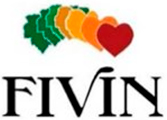
Estudios científicos
Endothelin-1 synthesis reduced by red wine
Abstract:
Statistical evidence of reduced coronary heart disease in areas of high wine consumption has led to the widespread belief that wine affords a protective effect. Although moderate drinking of any alcohol helps to reduce the incidence of coronary heart disease, there is no clear evidence that red wine confers an additional benefit. Here we show that red wines strongly inhibit the synthesis of endothelin-1, a vasoactive peptide that is crucial in the development of coronary atherosclerosis. Our findings indicate that components specific to red wine may help to prevent coronary heart disease.
Los polifenoles presentes en frutas, vino tinto y té pueden retrasar el desarrollo de aterosclerosis debido a sus propi4edades antinflamatorias y antioxidantes. Investigamos como los diferentes compuestos polifenolicos presentes en la dieta están divididos en diferentes clases. En particular la quecertina y la teaflavina pueden atenuar la aterosclerosis en ratones carentes del gen de ApoE.







